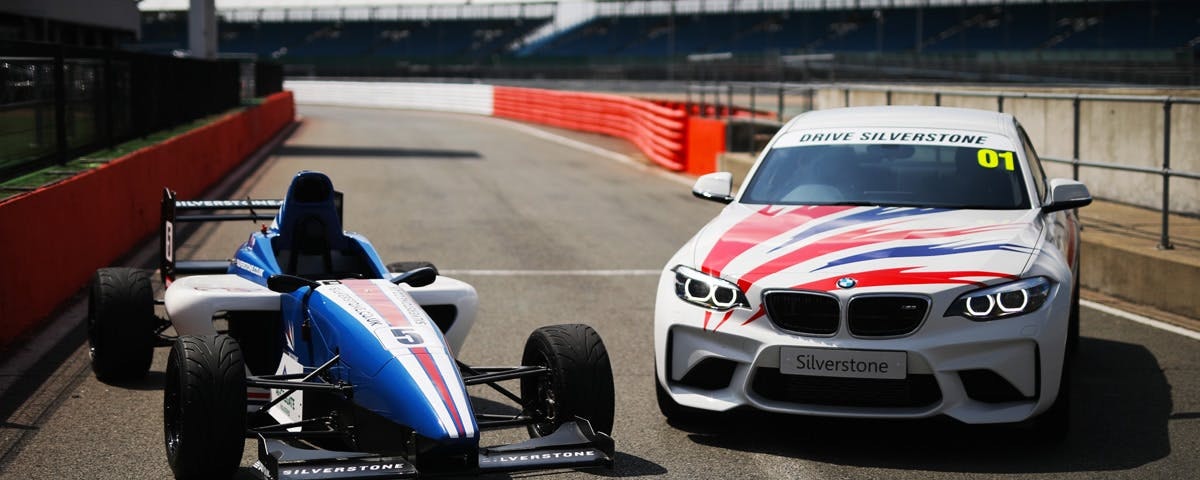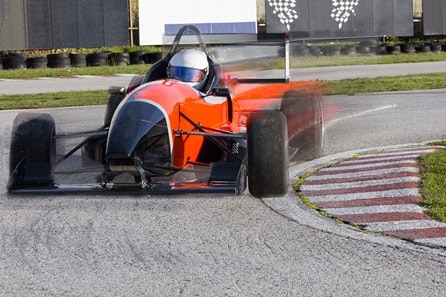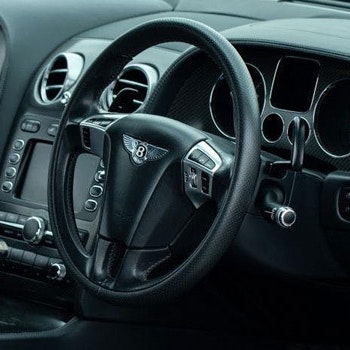What do you need to become a racecar driver?
Dedication
If you’re wondering how to become a racecar driver, you need to first understand the importance of being a self-motivated person, capable of pulling yourself out of bed, even on those cold and wet mornings when you’d rather hit the snooze button and stay wrapped up warm like a burrito. While of course your body needs to be in peak condition and you need to be able to stick to a strict diet, the biggest thing of all is sacrifice. Take Casey Stoner’s parents as an example; they sold their family farm in Australia to move to a caravan in Wigan, all in an effort to support their son.
Racing drivers recognise the importance of having a deep dedication to the process of failing, learning and trying again time after time. Think of all the moments you’ve watched your Formula One heroes narrowly miss out on victories (we’re looking at you Lando Norris in Sochi 2021).
You have to be dedicated to improving your own skills. In most motorsports, especially racing, there’s almost always going to be someone faster than you. But, it’s all about letting this drive you (excuse the pun) to be the best so it’s you tenths of a second ahead of everyone else when that chequered flag is raised.
Talent
The next step in how to be a racing driver is knowing that it’s about far more than just your average road car driving, it’s about talent. You need to be able to drive fast and know the exact second to brake around corners, never miss apexes (the point at which your car is at its closest to the inside of the corner) and deal with the pressures that come with racing.
Handling abilities, a foundation of engineering knowledge and teamwork skills are all a variety of measures that can be used to determine the talent of an individual. Talented drivers know what rational and calculated steps they need to take towards their ultimate goal of being a professional race car driver.
Money
So you’re probably wondering how to become a racecar driver with no money? Well, as you may know all racing teams up until F1 require money to go racing and in 99.9% of cases, that money is supplied by the driver. Being a professional race driver is one of the most expensive paths an individual can take and unfortunately raw talent just isn’t enough. In September 2021, Lewis Hamilton became the first ever F1 driver to reach 100 wins but that doesn’t mean they came easy. His father worked three jobs at one stage just to get him track time. To give you a rough idea of numbers, a season in Le Mans will cost you around €500,000+ (£424,585.00) and when it comes to single-seaters, it would be double that.
1. Learn the basics with go-karting
Start with go-karting
Go-karting has firmly established itself as the most common first step to becoming a racing car driver. Karting teaches you race craft and helps to develop useful driving techniques as well as revealing to you if you would be able to keep up with the physical nature of motorsport and if it’s something you like.
To get started in karting, all you have to do is head to your local track and participate in some ‘arrive and drive’ sessions to get a feel for it. Once you’re ready to get serious about karting, research nearby racing opportunities and find out how to get involved. In an interview with Red Bull, Lando Norris advised that “it’s a good thing to have your own kart. It doesn’t necessarily have to be all-new – it can be a second-hand kart.” A kart’s obviously a lot cheaper to own and maintain, meaning you can race whenever you like.
It’s also a good idea to get involved with a mentor or trainer. With their wealth of knowledge and experience in the industry, they can help guide you through the world of competitive racing. In addition to this, they’ll help you create a training routine so you can get a feel of what the life of a professional driver is like.
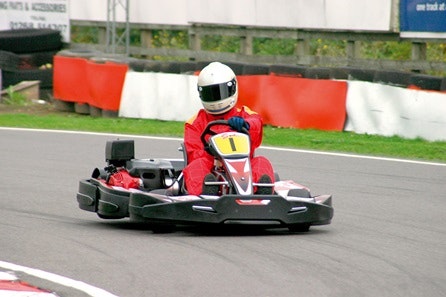
Go Karting for One
Go fast and furious on four wheels with this go karting experience for one. You’ll have a blast racing around a purpose built track in a small but powerful go kart. These motor vehicles pack some punch, so don’t hold back as you hurtle your way up to the chicane then fly around corners at controlled speeds.
Find out more
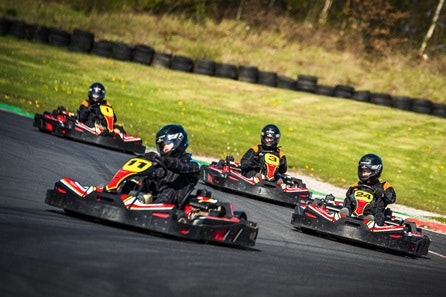
Go Karting for Two
Enjoy a ride to remember with this exciting go karting experience for two. You and a friend will have a blast racing around a purpose-built track in a couple of small but powerful go karts. These karts pack some punch, so give it all you’ve got as you hurtle your way up to the chicane then whizz your way around corners at controlled speeds.
Find out more
Join go-karting tournaments
For someone aspiring to become an F1 driver, it is mandatory to put in five to seven years in competitive karting according to Jehan Daruvla. Children can start learning from as young as five, progressing on to cadet level at eight with junior karting at 12 allowing them to start competing. Different local, national and international cup competitions are held throughout the year.
The British Karting Championships is a title that many of the current professional racing drivers have on their CV. It’s split into various categories, each with multiple classes:
- Rotax
- IAME
- TKM
- Honda
- KZ2
- Bambino
These tournaments are a great way to attract potential sponsors. If you can win races at a young age, sponsors will start taking notice and you may be able to jump into professional racing driving competitions with financial backing.
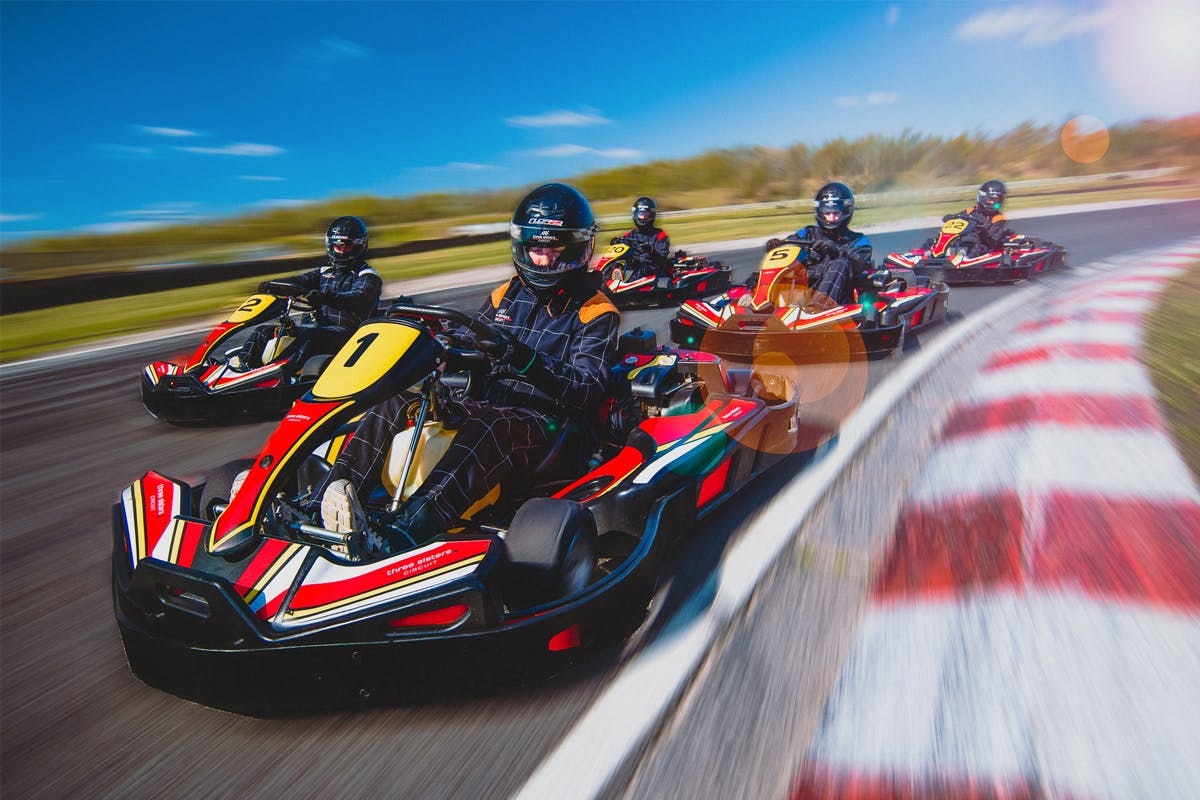
2. Move onto cars
Take racing classes
Advance your race car driving skills with a class. Start off with a single-day class and if after one day, you’ve been bitten by the racing bug, find a longer, more intensive course. Under the guidance of a highly qualified instructor, you can elevate your racing skills using track-prepared cars. These classes are available at a number of circuits in the UK including Silverstone.
Buy your own equipment
Racing is unsurprisingly a dangerous sport so wearing appropriate safety equipment is therefore essential. If you’re just getting started with the motorsport, you can buy a cheap car for the racetrack. Older, small sports cars are often a popular choice for the first time buyers as they’re affordable and perfect for learning how to push a vehicle to its limits. To make the car race-ready, it’s necessary to invest in a roll cage and a five-point seat belt too.
When it comes to what gear you should be sourcing, the following items are recommended by many:
- Helmet
- HANS device
- Race suit
- Gloves
- Boots
- Underclothing (top. bottoms and balaclava)
It’s also advisable to make sure that all equipment purchased is fire-proof (Romain Grosjean Sakhir 2020 is all we need to say). Of course, this doesn’t mean that racing equipment is affordable and if you can’t buy these yourself, you’ll need to find a sponsor. There are lots of guides available on how to secure funding but one of the most important practices to get in early is networking. Make sure you’re always ready to present who you are as well as your ambitions and you may find someone willing to invest in your future.
Do a racing course
The key to becoming a racecar driver is finding something that makes you stand out and that’s where racing courses come in. In the competitive world of motorsport, if you want to be part of the top teams then it’s necessary to have the broad range of skills demanded and the best way to get these is with a course. One such school you can study at is The National Motorsport Academy who offer two types of courses:
- Business - motorsport-focused courses examining the various aspects of the industry from an entirely commercial perspective.
- Engineering - learn the specialist skills, use the latest software and gain practical motorsport experience.
Join a racing club and compete
If you’re wondering how to be a race driver in the UK, one integral step is to get involved with a club of which there are 720 (and counting) Motorsport UK registered clubs nationwide. These clubs collectively organise around 5,000 events each year and are designed to give you cost-effective ways into the sport. One example of a popular club is the 750 Motor Club initially intended to bring together like-minded motoring enthusiasts before the notion of competing quickly came into play.
Another notable club is the The British Racing & Sports Car Club (BRSCC) who play an influential role in the industry. Every year, they organise over 35 race meets and 25 championships.
3. Practice makes perfect
Armed with all the tips you picked up on your driving day and the knowledge from your course, the next step is to practice, practice, practice. There are certain skills that can only be practiced on real race tracks and those that a simulator can help hone. The latter helps analyse braking points, gear ratios, passing areas and can help drivers get a feel for the layout of an upcoming race’s track.
4. Go professional
Find a sponsor or team
Indy Pro 2000 driver Parker Thompson says “10% of his job is driving, and the other 90% is securing sponsorship funding”. While a sponsor or a team will cover some or all of your expenses, the two differ in that the latter wants an exchange of your winnings whereas a sponsor is after advertising on your car. If you’re a great driver, you’ll get approached by both and be in a very good position. It’s all about mindset because you have to start thinking about your personal brand. Practice interviews, build a fanbase on social media so you can offer potential sponsors exposure online as well as on your racing equipment.
Get a mechanic
You’re only as good as your pitlane crew are so it’s a good idea to get yourself a mechanic. They’ll help you get your car ready for race day, make tweaks throughout the race and fix any problems at a mind-blowing speed. The best way to source one is via your involvement at the local racing club and see if anyone is willing to offer their services. Alternatively, check out the garages near you and network with them too. While you have them, you can use their specialist mechanical skills to your advantage and get them to check that everything is as it should be in your car, especially if recently purchased.
Enter races
Okay so sponsorship secured, you’ve got yourself a mechanic as a right-hand man (or woman) and now you’re ready for the big leagues. The first thing to do is ask your local club or team to help you find bigger races to compete in and enter as many as you can.
You’ll need to get your hands on a competition licence which will allow you to take part in most club-level races. Purchase a Go Racing pack from Motorsport UK which includes an application form and the next steps towards your competition licence. Once you’ve purchased, you’ll need to attend and pass a course with a member of the Association of Racing Drivers Schools (ARDS) like Silverstone.
Frequently Asked Questions (FAQs)
How hard is it to become a racecar driver?
As we have hopefully established, it's more than just talent and a desire to be like Lewis Hamilton. It's hard work, real dedication and a lot of money with it being the most expensive motor sport. It is long hours, constantly networking with people to find sponsorship and a lot of track time combined with training time to get your body in peak condition.
What type of race car driver makes the most money?
The highest paid type of race car driver is those in the single-seaters like Formula One. Closely behind that is stock car racing like NASCAR. Third on the podium of highest paid drivers is those who ride motorbikes in series like MotoGP.
How much do racecar drivers get paid?
It's one of motorsport's best kept secrets - just how much do drivers get paid? There's varying reports and salaries depend greatly on an individual's experience, reputation and work outside. In 2021, Lewis Hamilton is expected to make £45.5 million whereas Denny Hamlin in NASCAR is expected to make £9.5 million.
Can you become a racecar driver with no money?
It's certainly not easy but at the same time, it's not impossible. You're going to need sponsors if you have any chance at progressing through the ranks. The more races you win, the more prize money you earn and it's a good idea to build yourself a social media presence where you can get involved with brands and influencing.
